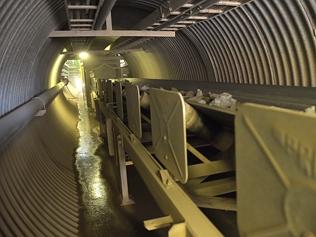BHP Billiton hopes rise for a state of balance
The recent commodity price run-up makes BHP’s potential to double free cash flow something to get excited about.
But he has done the next best thing by noting that at current prices, and by BHP continuing to work its socks off on productivity, BHP’s free cash flows could double from $US3.4 billion ($4.4bn) in the 2016 financial year to $US7bn in the year underway.
It could be said that the doubling capability puts a whole new spin on things, not just for BHP, but the broader resources sector as well, and Canberra’s hopes of more tax receipts from the industry post the bursting of commodity price bubble in 2011.
But truth is all that has been known since mid-January when a broad sweep of commodity prices bounced off their lows. It is why the market has not been waiting for yesterday’s BHP’s annual profit report, and Mackenzie’s commentary.
Nor has it been dwelling on the fact that yes, BHP’s bottom-line loss of $US6.38bn was a shocker. It was well flagged with the three key exceptional items nasties (Samarco, US onshore, and tax disputes) dribbled out during the year.
The market has been more interested in the rebound in commodity prices, pushing BHP shares 42 per cent higher so far this (calendar) year to the $20.25 close on Tuesday.
Now part of that is for the benefits of Mackenzie’s “extreme’’ focus on productivity (more volume from installed capacity at roughly the same cost, and/or the same volume for less cost).
Productivity gains of $US437m were achieved for 2016 (it could have been better but for a fall in grade at Escondida), and BHP says it remains on track for the $US2.2bn gains previously forecast over the two years to the end of the 2017 financial year.
But it has been the run-up in commodity prices in the last quarter of the June year, and since, that makes the potential of a doubling in free cash flow in the 2017 financial something to get excited about, in BHP’s share price at any rate.
As Mackenzie sees things — he was careful to put lots if and buts around the $US7bn free cash flow figure — commodity markets have come closer to balance.
“Although the trading range may not change, we will spend a little bit more time in the higher part of that range than in the lower part of that range than we have of late.’’
“But more importantly the fact is that there is some sense that prices have stopped falling as opposed to being in freefall,’’ Mackenzie said on the media call for the profit report.
“That pause in the price falls means that we can continue to drive down costs and open up a margin which instead of only sharing with our customers, we can share with investment in our company and with our investors.’’
Baked-on BHP shareholders who got used to the former progressive dividend policy which was abandoned in February will be pleased to hear that. Had the policy stuck, BHP would have paid an annual dividend of $US1.24 — a $US6.5bn commitment a company with a $US26bn net debt did not need.
Instead, the final dividend is US14c a share, making the annual payout US30c a share. The best thing that can be said about the final dividend — it is a couple cents short of what the market was expecting — is that it is covered by free cash flow.
And that is where all of the miners want to be. Because even with the improved price outlook, volatility remains out and about. It is why the other big response to weaker commodity prices — capital restraint — is not about to be loosened anytime soon.





BHP Billiton boss Andrew Mackenzie has not exactly called the end of the four-year rout in commodities.